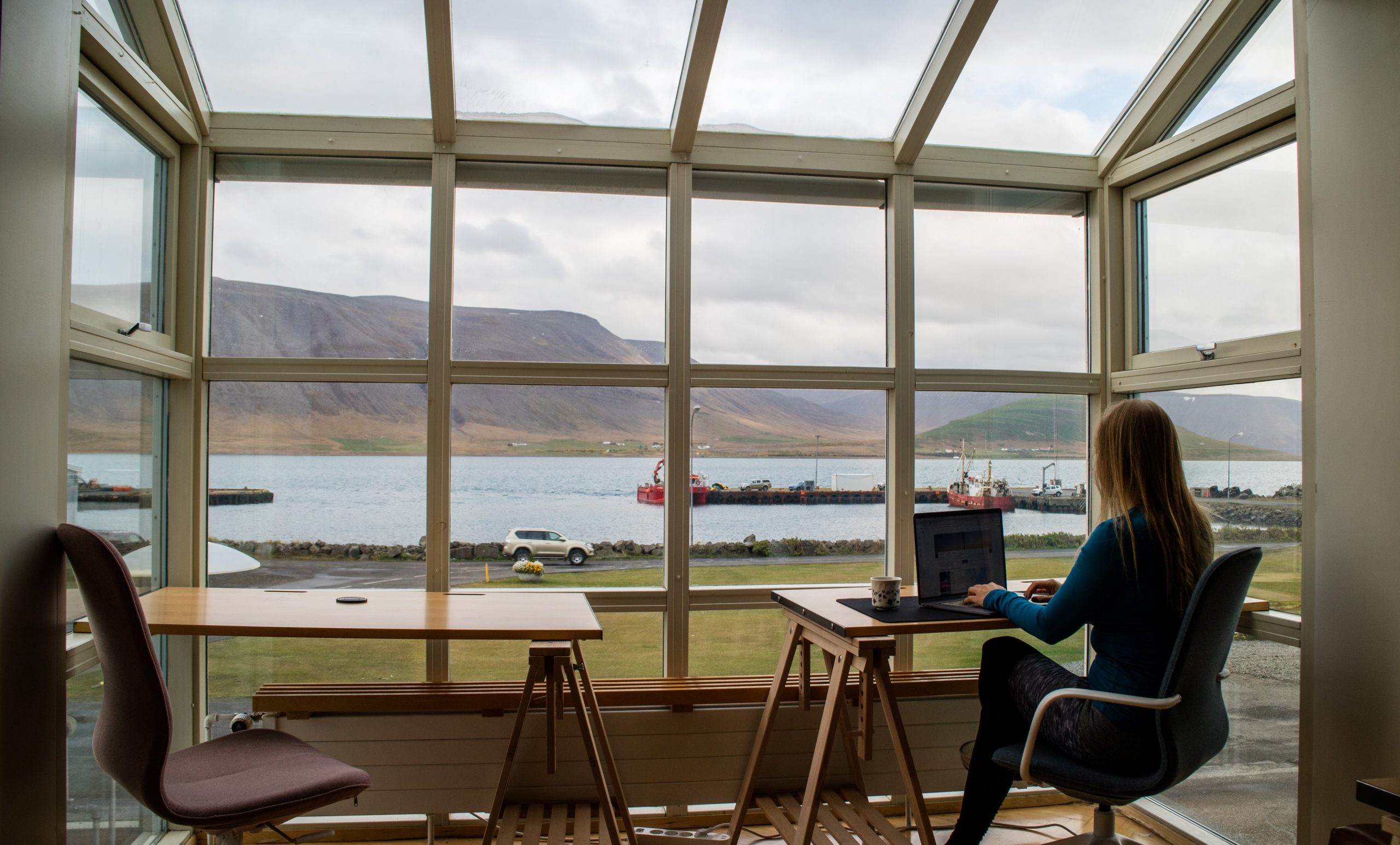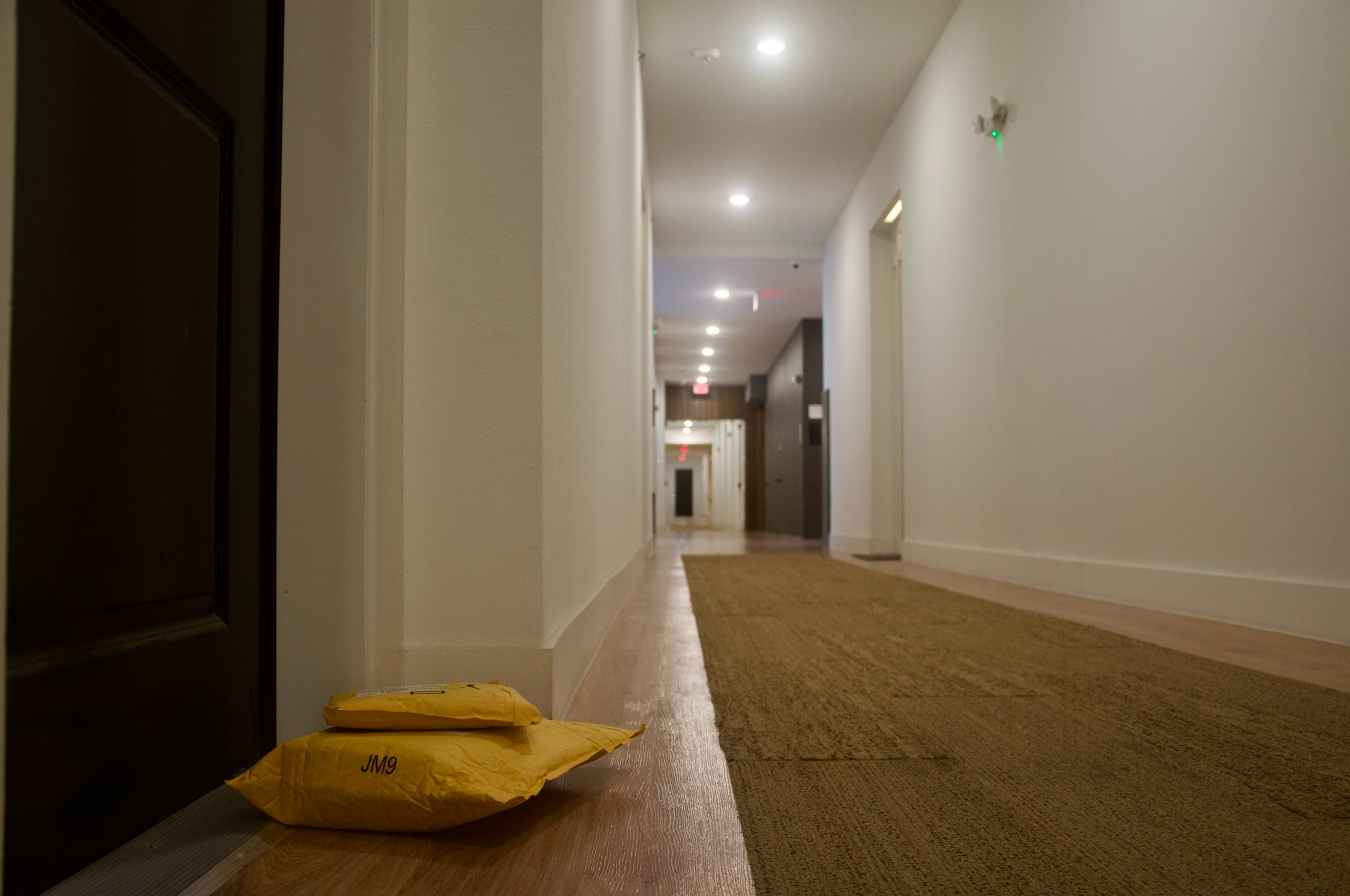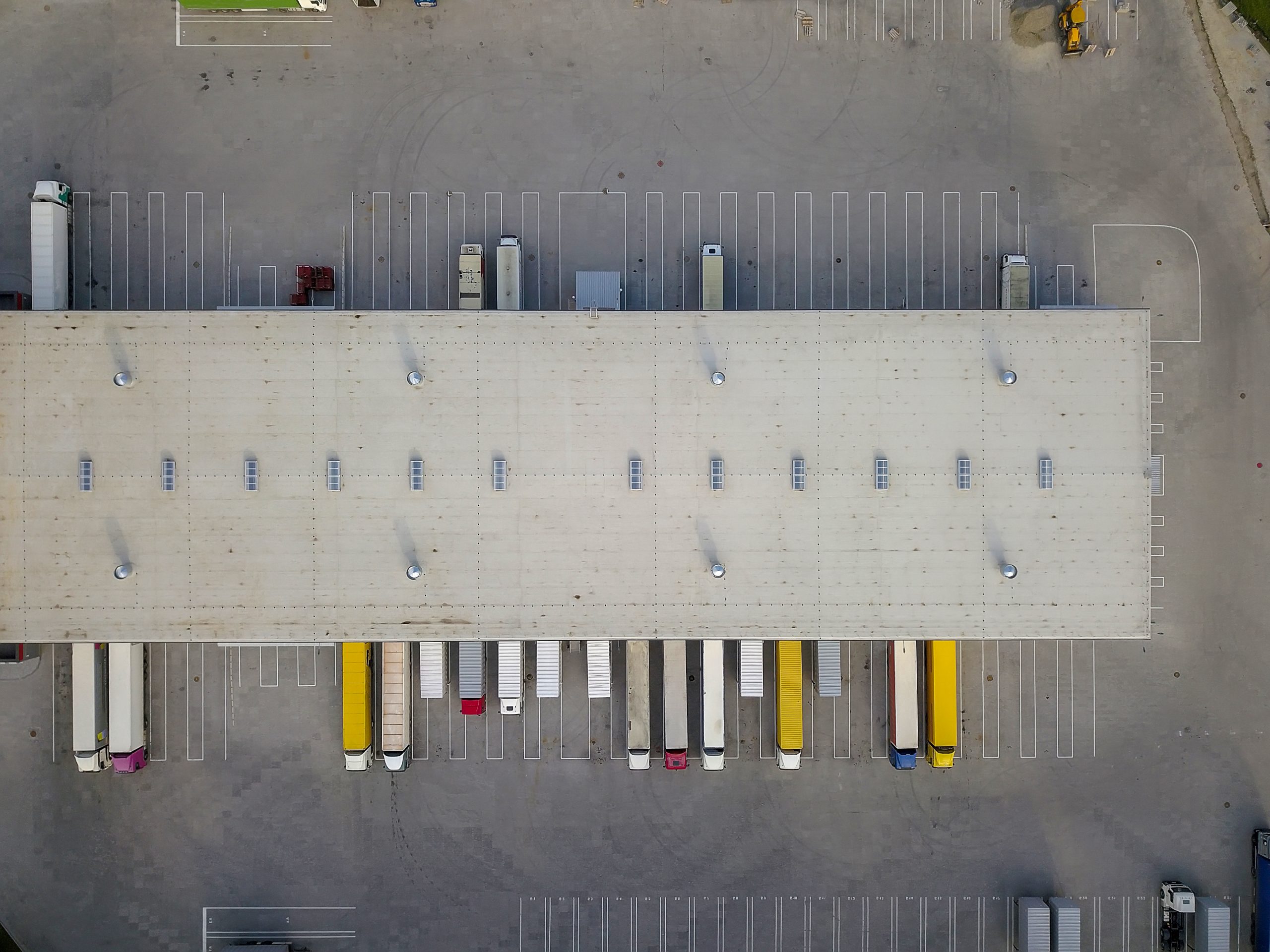Post-pandemic placemaking: five trends shaping the future
July 26, 2021
As we emerge from the Coronavirus crisis into the ‘new normal’ the real estate industry faces a pivotal moment.
A complex picture is beginning to emerge of how our spaces and places will look and feel as life begins to return to some degree of normality.
The built environment, and the structures and systems which underpin it, have been radically disrupted by the impact of coronavirus and the knock-on effects the pandemic has had on social, economic and cultural activity.
Some of this disruption will be permanent. Some of it less so.
In fact, in most cases the pandemic has accelerated changes which were already well underway.
But with the rapid speed of change seen over the past 18 months, people, policy makers and the industry will now be considering their response carefully to try and ensure that the next step forward is a positive one on the journey towards ‘building back better’.
As they do so, five key trends will be top of mind:
- 01: Data driven planning and development decision making
- 02: Blending working and living
- 03: The retail revolution
- 04: Accessible places and spaces
- 05: Greening the built environment
01: Data driven planning and development decision making
The government’s Planning For the Future white paper was hotly anticipated. Implementation of the specific reforms proposed in the consultation are still likely to be some way off, but at least one component has already been shown to be an almost certain direction of travel – namely increased digitalisation of planning. As the consultation says:
“It is also time for the planning system finally to move towards a modernised, open data approach that creates a reliable national picture of what is happening where in planning, makes planning services more efficient, inclusive and consistent, and unlocks the data needed by property developers and the emerging Property Technology (PropTech) sector, to help them make more informed decisions on what to build and where.”
The experience of the pandemic shone a spotlight on the analogue nature of a considerable swathe of the planning system, not least committee meetings – with Local Authorities needing to pivot to provide virtual meetings. Such was their impact that a legal challenge was launched to extend their use. That challenge failed, but given the considerable potential benefit in terms of communication, transparency and inclusion, the government is consulting on whether to make virtual meetings a permanent fixture / option of the planning process.
But the wider potential for digitalising planning and development is eye watering.
The private sector has already been leading the charge of course, with organisations such as Land Tech providing cutting edge access to site information. The government and wider public sector is prioritising this too, though, with techies at MHCLG driving innovation in Digital Land and the PlanX platform in collaboration with Connected Places Catapult.
The watchword in all of this is of course data.
Data is everywhere, being created all the time, and it is increasingly being deployed to inform and enhance decision making both by commercial enterprises and governments.

Location data of course has become a key tool in the fight against Covid-19 globally, from tracking of individuals’ specific movements via mobile networks to app-based ‘check-ins’. It is not a huge leap to consider the potential planning and public policy implications of this huge data gathering exercise, which is likely to continue in one form or another.
Take the example of Citymapper whose data has been used to show the comparative drop in journey planning during the pandemic across major cities.
This kind of intelligence, going forwards, may well form the basis of future infrastructure decision making.
Looking ahead, the World Economic Forum forecasts that by 2025 (a mere three and a half years away) there will be 41.6 billion devices around the world capturing data – from mobility to energy usage to shopping habits. That’s around five devices for every human being.
The resulting privacy and security concerns are of course huge, but so is the opportunity. Proptech companies are at the cutting edge of this ‘fourth industrial revolution’, with the likes of District Technologies utilising data to provide building owners and occupiers tools to engage with and better manage their ‘users’.
Whatever the future holds for planning and placemaking, one thing is certain. Data and digital will be fundamental.
02: Blending working and living
Perhaps one of the biggest questions facing the property industry as the economy begins to unlock is just what will be the response of employers, and employees, to shifting from home-based back to office-based working. The thought leadership production from the industry on the future of working has been voluminous, and the prevailing wisdom seems to be that the demise of the office has been greatly exaggerated.
But the changes wrought by the pandemic are likely to be permanent for some, if not all.
Indeed, not moving with the times and embracing the many benefits that remote working has brought is a significant reputational risk. Apple, for instance, faced an ‘employee revolt’ after a memo announced that from September people would be mandated back into the office for three days a week. One wonders whether such a hybrid model would have been met with such rancour if it had been mooted prior to the pandemic.

kristin-wilson-z3htkdHUh5w-unsplash
Facebook has also shifted its stance to allow more permanent remote working – though interestingly caveated its offer with potential pay reductions for those who choose to relocate to more affordable locations.
With a recent study showing that 75% of workers would consider relocation if remote work was offered permanently this is a very real issue and one which will test both company culture and placemaking decision making.
It will also play into the ‘levelling up’ agenda and the focus, in the UK at least, on building growth and resilience in regional economies. London will always maintain its attractions but maybe, just maybe, major employers will increasingly be looking at secondary and tertiary cities to establish more cost-effective bases, which will have knock on effects for the retention of talent and spending power in areas which previously suffered the results of the ‘London brain drain’.
How towns and cities brand themselves in this context as destinations for investment (individual and corporate) will be key.
Of course, permanent remote working is not just limited to the technology trailblazers.
The debate is rife across industries, including in the, relatively speaking, traditionalist professional services – with advisory firm BDO announcing in May this year that staff can decide for themselves where they work based on where they are most productive. This was followed with a similar announcement in June by Big Four firm Deloitte.
Despite these kinds of policies seemingly heralding the slow death of the office, the reality is that, as with so much, what will emerge post-pandemic is more likely to be a blended solution.
In fact, Paul Swinney, director of policy and research at Centre for Cities, said in a recent BBC interview that over the longer term we could well see people return to five days in the office. This may be a step too far and some sort of hybrid model will become the norm.

There are, after all, significant reasons for maintaining a physical office footprint – some operational and some cultural.
These issues are well known to all, and are essentially those small things or things that were taken for granted pre-pandemic: the casual chat at the coffee machine which sparks a new idea or initiative; the overheard conversation which leads someone to ask a question and gain greater understanding; simple learning by osmosis of seeing someone more senior operate the way they do on a day-to-day business; the quick team huddle to solve a problem without having to schedule a time and rely on a video link; the socialisation with colleagues and clients, which doesn’t involve staring at a screen, to nurture valuable relationships; simply providing a safe, and inspiring, place to work for those who aren’t fortunate enough to be able to comfortably work from home and separate home and ‘office’ life (a particular issue for the younger generation in major cities like London who are likely in shared accommodation).
There are many more.
Antony Slumbers has written at length about how this hybridization of work will have lasting real estate consequences and, importantly, the conclusions (or at least questions arising) are to some extent placemaking ones – what needs does the user of space have of their environments, both inside the office and in the local vicinity, and how must the industry and its structural norms – including investment models – adapt to better suit these needs.
In our Place Stories interview with Lloyd Lee of Yoo Capital back in 2019 a similar guiding principle emerged for investors and developers when it comes to creating places – will people actually want to go there, and what reasons can be given to extend their dwell time, experience and enjoyment (and therefore economic activity, whether that’s retail spending or office working)?
In any case, investors haven’t given up on the office just yet, and according to the Financial Times office construction has started to rebound from the pandemic doldrums. The debate over whether such space is fit for purpose, and how it will be used, will continue.
Meanwhile, for businesses, their real estate strategy is likely to continue being a key issue upon which they face questions from stakeholders – including colleagues, clients/customers, investors, and the media. The office is, now more than ever, a critical reputational and communications factor as well as an operational one with all stakeholders, particularly staff and potential recruits, likely to vote with their feet if a business is seen to be not meeting their expectations.
03: The retail revolution
The challenge facing the high street cannot be underestimated.
Retail has been undergoing a dramatic transformation for far longer, of course, than the past 18 months and the difficulties facing retail brands and landlords cannot solely be attributed to the pandemic.
Factors such as the rise of e-commerce have been disrupting traditional retail operators for well over a decade and to a large extent retail has become increasingly polarised, between on the one hand convenience and the other experience.
To a large extent it has been those operators stuck in the half-way house between the two that have seen the most disruption and, indeed, business failures.
This trend was accelerated by the pandemic, resulting in several notable brands falling into insolvency.
That retail insolvencies have remained relatively low overall has been at least partly due to the roll out of government support schemes such as furlough, as well as the moratorium on landlords evicting businesses for unpaid commercial rents. It remains to be seen how far the removal of these schemes will precipitate what some have forewarned as a “tsunami” of business failures in the near future.
Online shopping of course saw a huge surge during lockdown.
According to a survey in the summer of 2020, a third of consumers said they were shopping even more online than during the first lockdown, while almost three quarters received between one and two online shopping orders a week. Part of this was of course out of necessity rather than choice, but convenience has a high level of customer stickiness.

From a real estate perspective this has had a significant and long-term impact.
While the government’s support for retailers has been considerable and has propped up many ailing businesses, the same cannot be said for landlords who own and operate bricks and mortar stores and portfolios. When the extension to the moratorium on commercial landlords eviction rights was confirmed, British Property Federation Chief Executive Melanie Leech said: “The Government has failed to recognise that commercial property owners are essential to the health of our town centres – to creating economic growth, jobs and opportunity.”
This dilemma was cast into sharp relief almost a year ago with the collapse of Trafford Centre owner Intu in the summer of 2020. Hammerson meanwhile saw a significant drop in asset values and made the strategic decision to exit the retail park sector, and British Land oversaw a £400m retail asset divestment during the pandemic, with the Financial Times reporting that unsold retail stock would be repurposed – including potentially into warehouses servicing e-commerce. Indeed, British Land has been on a ‘sheds’ acquisition drive, including an £87m warehouse in Enfield.
The continued investor interest in logistics facilities is understandable, with most betting that the online retail growth seen in recent months and years is here to stay. CBRE predicts that in Europe alone 300 million sq ft of additional warehouse space will be required by 2025 to keep up with demand. That’s the equivalent of almost 4,000 football pitches.

Clearly, the online retail giants have been huge winners from the pandemic (just ask Jeff Bezos).
The flipside, though, is that the isolation and, let’s face it, boredom of lockdown has made many people far more conscious of the value inherent in going out to shop. A survey in the spring of 2021 reflected this, showing that 70% of people were planning to visit physical stores as much or more than pre-pandemic once they reopened. This pent up demand, resulted in a sales surge in April.
Consumers have, though, clearly become more discerning and more demanding. Increasingly, shopping in store – on a high street or in a town centre or even shopping centre – is a lifestyle decision, with shopping trips now forming part of a ‘day out’, likely to include dining out and / or some kind of leisure or cultural activity.
In many ways part of the high street’s challenge has been an over-saturation, over time, of retail at the expense of other consumer offerings which, blended together, create a richer place and experience. Mixed-use is key, and that includes the sensible and sustainable incorporation of residential and office space (a captive market to some extent) and other services which will pull people in such as nurseries, dentists and libraries.
The future of retail will be driven by the approach taken by brands and landlords to providing shoppers something compelling which they cannot get online, and which increases their dwell time in retail destinations. That means a diverse mix of uses and becoming increasingly ‘human-centric’ The recently announced plans to part pedestrianise Oxford Circus are a move in the right direction.
04: Accessible places and spaces
Pedestrianisation is one form of improving accessibility, but there is a broader point to make here.
Over the past 18 months in particular there has been an increasing recognition that many people do not feel comfortable (to put it mildly) in the places which they inhabit. Many places are simply not conducive to the flourishing of the full, diverse make up of people which constitute their communities.
There are many facets to this.
To take one example, according to almost any public institution you care to mention population ageing is going to have a significant effect on world economies over the next 25 years. The World Health Organisation projects that the proportion of the global population will grow to 22% by 2050 (up from 12% in 2015) while, in the UK, the proportion of the population aged 85 years and over is projected to almost double by 2043 according to the ONS.
As Grosvenor identified in its ‘Silver Cities’ report this will have profound implications for Real Estate.
With people living longer, and working later in life (this may have been impacted still further by the pandemic and the shift to working from home), office occupiers will need to consider how their portfolios are equipped so as to capitalise on the significant value and experience older workers offer.
Town centres and retail destinations will, also, be smart to create places which are accessible to this growing demographic which will have more wealth and discretionary spending power than previous older generations.
And finally, there are significant opportunities in the residential sector to create places which are tailored to the needs of older people – which are many and varied. Savills research back in 2019 highlighted the potential scope of this market.

But it’s all very well developing / redeveloping particular assets to suit the older population. Wider consideration must be given to issues such as mobility, security, health and wellbeing.
The Centre for Ageing Better has produced a helpful set of recommendations in that regard for creating age-friendly cities and communities.
But those issues are of course not limited to affecting older people. Similar consideration must also be given to people of all ages, backgrounds and physical abilities if we are to create truly thriving places.
Accessibility is not, though, just about real estate per se. It’s not about mobility. It’s not even about economics. Its actually about creating, or enabling, a sense of belonging.
This is perhaps the most difficult challenge to solve.
One of the most impactful stories of the ‘pandemic year’ was actually nothing at all to do with the pandemic. The Black Lives Matter movement caused reverberations around the globe, including the UK with one of the resulting impacts being significant public scrutiny of the legacy of place (and placemakers) and the stories, often troubling, which lie behind many public spaces and places.
The toppling of the statue of Edward Colston in Bristol was the first example. The debate over the Cecil Rhodes statue at Oriel College, Oxford fanned the flames further.
There are no easy answers to the questions raised by these examples, questions related to the ‘rewriting of history’, how context is communicated, and how community voices are heard – and answered.
So far as the impact for placemaking goes, however, the UK government’s actions in light of this movement speak volumes, with the new National Planning Policy Framework adding a specific requirement for local authorities considering an application for the removal of a statues, plaque, memorial or monument (whether listed or not) to have regard for, rather than removal, explaining the social and historical context.
As communicators, we know history and heritage are fundamental ingredients to crafting the story and brand of a place. It provides a sense of rootedness, the beginning of a narrative which is then taken forward and developed by the community and users of a place.
That this is now engrained in planning regulation is for the most part to be welcomed – but if history is the seed of a place, to stretch a metaphor, then people are the sun and rain and nutrients which will make that place grow into something special. That is why access, and belonging, are vital.
05: Greening the built environment
2021 will likely continue to be, in many ways, a year defined by Covid-19. However, looking beyond the immediate pandemic impact the legacy of this year may turn out to be defined by the world’s response to the climate emergency.
With the delayed COP26 due to take place in November all eyes are on the approach of governments around the globe to tackling carbon emissions and natural resource consumption.
The approach of business to this issue is increasingly under the radar, too, with stakeholder expectation rising for corporates to operate responsibly, take definitive action and be seen to be ‘doing their bit’. The recent Shell court case may be seen as a turning point in that regard.
The built environment must respond to these trends, not (just) for altruistic purposes but because occupiers will increasingly make their decisions at least partly with sustainability in mind.
The jury is still out on just whether there is such a thing as a ‘green premium’ on commercial buildings, with Savills for instance noting that it is difficult to separate whether higher valuations for buildings with good green credentials are due to those credentials in and of themselves or because these buildings by their nature tend to be newer and of high-quality build.
RICS research published at the end of 2020 showed that while occupier demand for green buildings is increasing, the shift is slow and that while there is evidence for a ‘green premium’ this is generally no more than 10%. Indeed, according to RICS’ survey respondents, investors are still more motivated by traditional cost considerations than green credentials.

Real Estate has always been relatively slow to adapt to change and so this incremental shift in mindset is unsurprising, but the signals are there that sustainability will continue to rise in importance for occupiers, landlords and developers.
Indeed, according to recent research from JLL, 83% of occupier survey respondents agreed that the link between corporate real estate and sustainability is a board level agenda item and more than half of occupiers reported prioritizing building credentials as part of their occupancy decision making.
Interestingly, almost half of investors in the research cited enhancing brand and reputation as a key driver of carbon reduction strategy. Corporates’ approach to sustainability is a critical communications and reputation factor, which can make or break brand value.
Real Estate is a key part of this, with property strategy heavily influencing the decisions of a business’s people.
Put simply, people want to work in places which have good provision of light, clean air, outside / green space and which they can feel proud of. Occupiers must respond to these demands and, therefore, so must landlords and developers.
This has important implications for placemaking more generally, including in the residential sector.
Factors such as access to green space and air quality, for instance, are frequently highly cited as of critical importance when making property decisions.
For example, a survey carried out by YouGov on behalf of the Urban Land Institute found that the provision of parks and green spaces was the number one factor which would lead the UK general public to support new community development in their local area, closely followed by provision for wildlife and biodiversity.
The government’s new Future Homes Standard seeks in part to address these concerns on a dwelling-by-dwelling basis but clearly environmental responsibility will need to increasingly form part of broader development strategy and master planning.
The environmental challenge facing the real estate industry of course goes much wider and deeper than what is built. How the built environment is constructed, and maintained, is of fundamental importance, too.
The built environment contributes around 40% of the UK’s carbon emissions. Globally, building and construction are responsible for 39% of all carbon emissions worldwide.
Incorporating sustainability into the construction process and supply chain, through innovative solutions such as MMC and even more cutting edge technologies will be of crucial importance to the world’s response to climate change, and will have ramifications for placemakers in terms of how places and spaces are conceptualised and delivered.
The intangible place
It is of course difficult to predict just how transformative the impact of the pandemic will be on placemaking and real estate more generally.
With lockdown restrictions now for the most part lifted, we wait to see the full extent to which those industries which have suffered most – particularly in hospitality – will be able to bounce back. In many ways, those industries, including the night time economy, are the lifeblood of our most vital places.
What has become clear, though, during the pandemic is that the places and spaces which we inhabit – whether that is our homes, our towns, cities and villages or our places of work – have an intangible value beyond their monetary worth.
Our neighbourhoods play a key role in shaping culture, identity and relationships in the same way that office buildings are an important reflection of and contributor to a company’s brand, values and people strategy, or how a store’s location tells you something about expectations of experience and service.
Upon its launch, the UK’s new Office for Place used the phrase “creating beautiful, greener, enduringly popular places where people want to live and can prosper”. That last sentiment is, perhaps, the most important trend to note – that placemaking now and into the future is about putting people first. That simple principle will bring with it a whole host of changes to the established way of doing things in real estate. The industry is ready for the challenge.
Tal Donahue, Senior Account Director at Infinite Global
Property and placemaking
For more than two decades we have advised many of the world’s top property consultants, surveyors, developers, agents, construction firms, architects and professional advisers. We understand the intricacies of the property industry, and work with clients to anticipate issues and market changes, offering creative solutions and executing brand-altering media and content campaigns.
Read More
Infrastructure
Strategic thinking and careful planning are paramount in both building and protecting reputations in the demanding infrastructure space. As well as executing compelling multichannel campaigns that set the agenda and promote clients’ solutions, we offer crisis and reputation management guidance for those facing challenging times.
Read More
